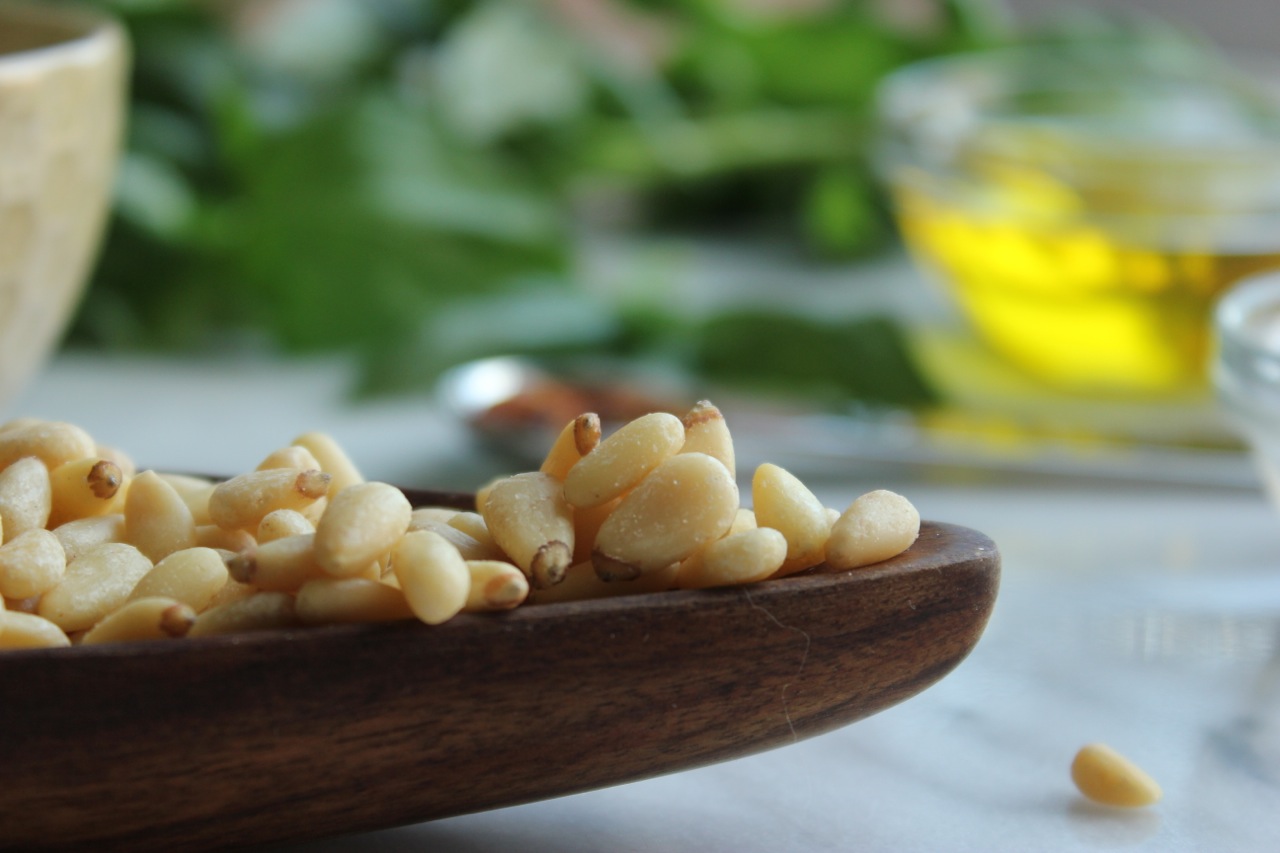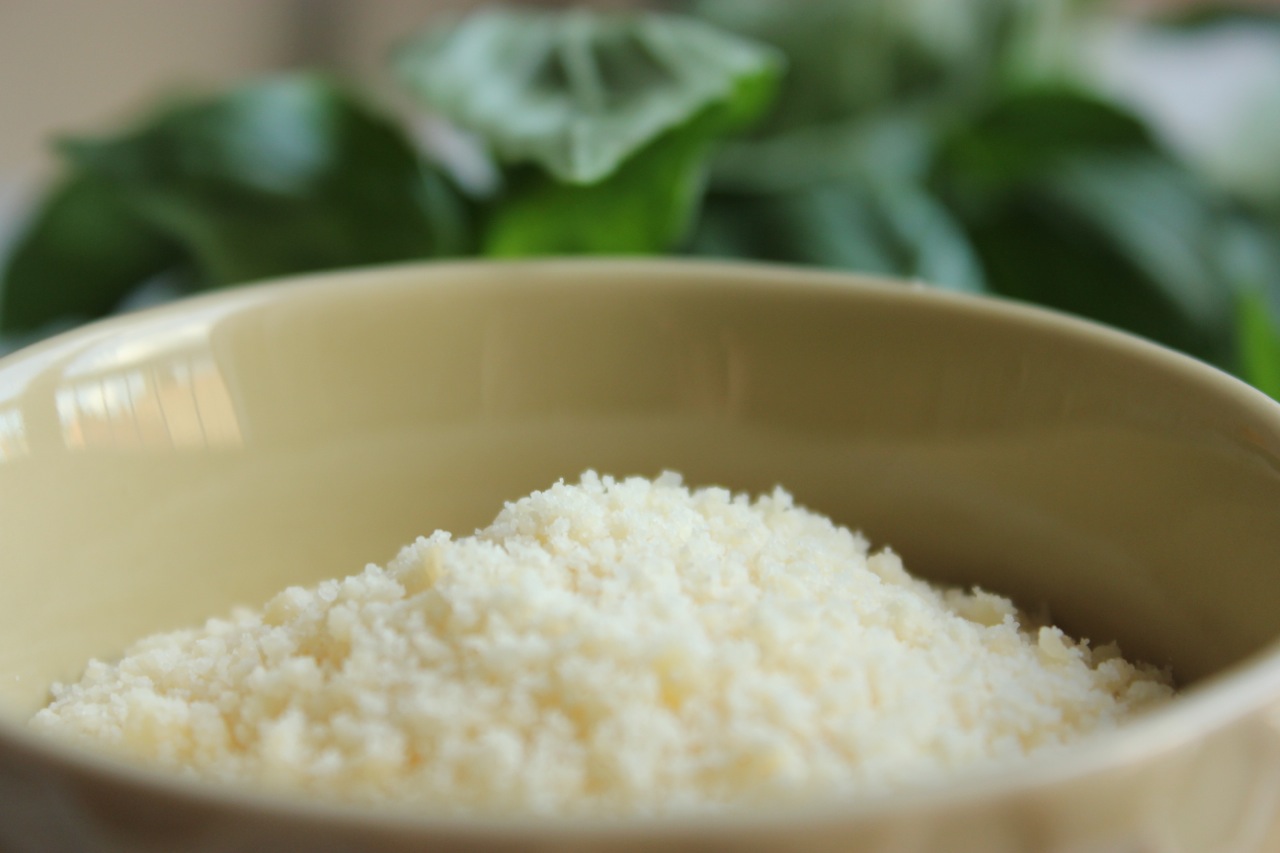Classic Basil Pesto
Classic basil pesto is also one of those things like guacamole- much simpler to make than originally thought, and seems way more intimidating than necessary. It is the ratio of ingredients that makes it or breaks it, but that also leaves more room for freedom to play around to see what type of pesto you like better.
Generally speaking, chunkier pesto makes for better a better spread to use on sandwiches (tartines!!) or even as a dip, and creamier/more oil-heavy pestos are better to use as sauces in dishes like pasta.
I must confess that I didn’t really like pesto up until about two years ago. I mainly attribute it to my not having great pesto in the past- the key is definitely using quality ingredients. If you happen to have a really top-notch olive oil, it is a must-use here. I got a really nice bottle of Italian olive oil as a gift and it made for the most delicious pesto I’ve ever had.
Fun fact: although a high majority of the common extra-virgin olive oils that you buy in supermarkets claim that it they are made in Italy, a lot of the time, they are actually just packaged in Italy but the olives are grown and pressed in Spain. Spain is the world’s largest olive oil producer, which some find surprising, considering most bottles have an Italian flag slapped across the label.
Anyhow, I love pesto for its versatility in use and it is an awesome food to upcycle- I’ll make a huge batch of it when basil is abundant at the farmer’s market (just got a giant bundle for 2 George Washingtons) and I’ll freeze the leftovers to reheat whenever my heart so desires. Don’t just use it for noodles- I love cooking chicken and throwing it in a little pesto, or topping a bowl of veggies with some pesto and a poached egg (heavenly combination!). Pesto is definitely higher in fat content with the EVOO and parmesan, so I tend to use it a bit more sparingly, but a little goes a long way with the intense flavor.
Like avocados though, basil tends to brown rather quickly when exposed to air, so if you are planning to make more than you plan on using in one go, make sure to seal it as tightly as possible. Tip: I like to press a tiny piece of saran wrap directly on the surface of the pesto to really smush any potential air out of it, then place the actual airtight container cover on it.
You can pretty much make pesto with any type of leafy green or herb and whatever nut you want- in this case, I stuck to the classic basil + pine nut combination, but I added red pepper flakes to add a kick of spice.
Classic Basil Pesto
*makes about 1 cup


Ingredients
3 bunches of Basil leaves (~6 cups loosely packed)
1/4-1/2 cup EVOO (I used 1/4 for chunkier pesto)
1/2 cup Pine Nuts (Pignolias)
1/2 cup grated Parmesan Reggiano
2 Garlic Cloves (I used frozen)
1/4 tsp Himalayan Pink Salt
1/2 tsp Crushed Red Pepper Flakes
SPECIAL TOOLS NEEDED:
Food processor
Recipe
1. Place the pine nuts, parmesan, garlic, and salt in the food processor and gently pulse a few times. Add in half the basil leaves, and blend until combined.
2. Add in the remaining half of the basil leaves and red pepper flakes and blend continuously, pausing to scrape down the sides of the bowl as needed. Keep blending until well-combined.
3. With the processor running, gently pour in EVOO through the hole in the bowl's cover (if your processor doesn't have one, just open and pour in EVOO in small parts, blend, and repeat). Keep blending until pesto is uniform.
4. At this point, you are finished- but feel free to add some more of whatever ingredient you feel is needed to taste.
5. Mix pesto with whatever you are using it for and serve immediately. For whatever quantity you aren't using immediately, cover so it is airtight and less prone to brown. You can refrigerate it for a week, or freeze it for a few months (if it lasts that long without being eaten....).
My pesto mixed into soba noodles!
He-llo. Nom.
Basil chicken breast over baby spinach with bean wild rice mix & a poached egg.
Plating, man.








